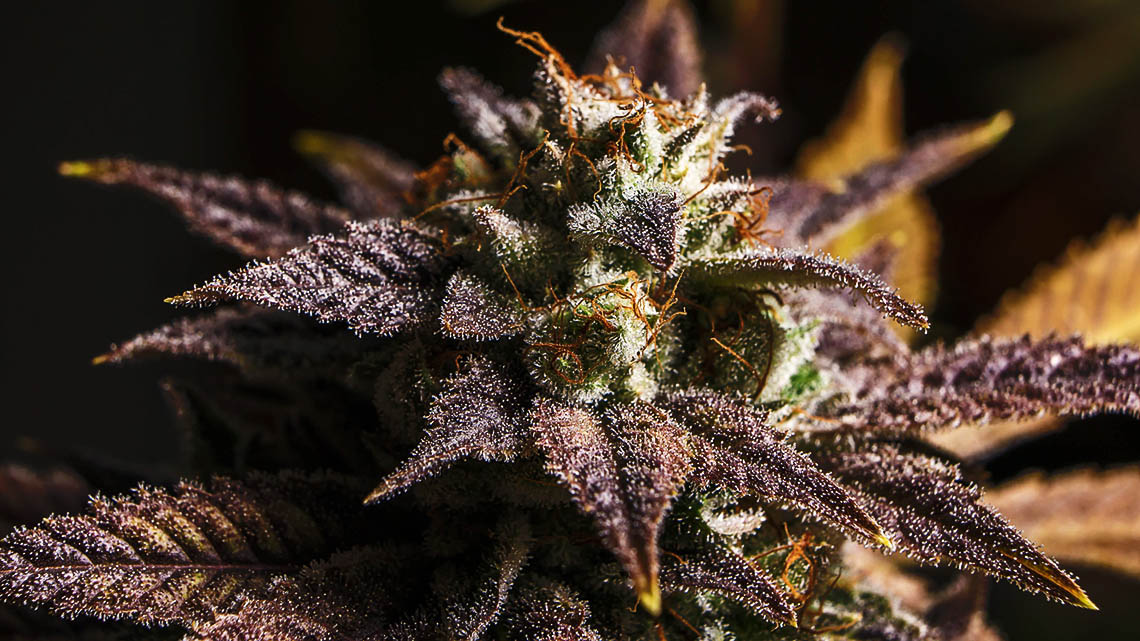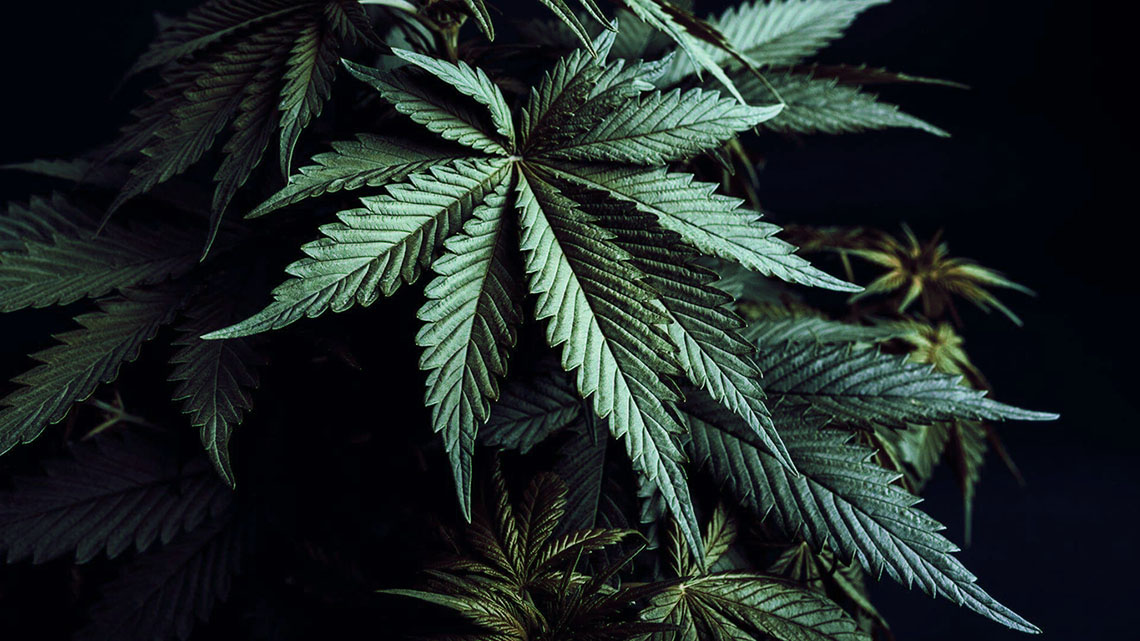
THC კანაფისში: როგორ გავზარდოთ შინაარსი
კვირტების რაც შეიძლება ძლიერი გამოყვანა ყველა მებაღის სურვილია. დღესდღეობით, კანაფის მცენარეების კანაბინოიდური შემცველობა სულ უფრო მნიშვნელოვანი ხდება როგორც სამედიცინო, ასევე რეკრეაციული გამოყენებისთვის. დღევანდელი მომხმარებლები უფრო ინფორმირებულები და მომთხოვნები ხდებიან, ეძებენ პროდუქტებს კანაბინოიდების სპეციფიკური თანაფარდობით. ზოგიერთი ადამიანი ინტენსიური ფსიქოაქტიური ეფექტისთვის მაღალი THC დონის მქონე შტამებს ანიჭებს უპირატესობას, ზოგი კი მაღალი CBD და მინიმალური THC დონის მქონე ჯიშებს ირჩევს.
თესლებში ან ყვავილებში კანაბინოიდების ზუსტი დონის ცოდნა მომხმარებლებს საშუალებას აძლევს გააკეთონ ინფორმირებული არჩევანი, რომელიც შეესაბამება მათ მიზნებს, იქნება ეს რელაქსაცია, თერაპია თუ ზოგადი ჯანმრთელობა.
THC-ის მნიშვნელობა და კანაბინოიდების როლი
THC (ტეტრაჰიდროკანაბინოლი) მისი ფსიქოაქტიური და თერაპიული თვისებების გამო, მწარმოებლებსა და მომხმარებლებს შორის ერთ-ერთ ყველაზე პოპულარულ კანაბინოიდად რჩება. მათთვის, ვისაც სურს კვირტებში THC-ის მაქსიმალური დონის მიღება, აუცილებელია აირჩიოს გენეტიკური ინგრედიენტები, რომლებიც ბუნებრივად მდიდარია ამ კომპონენტით. უნდა გვახსოვდეს, რომ ორიგინალური მცენარეული მასალის ხარისხი გადამწყვეტ როლს ასრულებს და კულტივირებისადმი კომპეტენტურ მიდგომას შეუძლია მნიშვნელოვნად გაზარდოს THC-ის კონცენტრაცია. მოსავლიანობაზე მოქმედი მრავალი ფაქტორის მიუხედავად, მთავარი კითხვა იგივე რჩება: როგორ გავზარდოთ THC-ის საერთო შემცველობა საბოლოო პროდუქტში? ამ სტატიაში განვიხილავთ კანაფის კულტივირებისას THC-ის წარმოების მაქსიმიზაციის ძირითად მეთოდებს.

კანაფის თესლი: სწორი გენეტიკის შერჩევა
თუ გსურთ თქვენს მცენარეებში THC-ის დონის გაზრდა, პირველი და ერთ-ერთი ყველაზე მნიშვნელოვანი ნაბიჯი სწორი თესლის შერჩევაა. ამჟამად, ბაზარი გვთავაზობს შტამების უზარმაზარ მრავალფეროვნებას, რომელთა THC შემცველობა თითქმის 30%-ს აღწევს. სულ რამდენიმე წლის წინ ასეთი მაჩვენებლები მიუწვდომელი ჩანდა, მაგრამ თანამედროვე სელექციური ტექნოლოგიებისა და ფრთხილად გენეტიკური მუშაობის წყალობით, მწარმოებლები ქმნიან შტამებს გამორჩეული მახასიათებლებით. თუმცა, ჯიშის არჩევა მხოლოდ დასაწყისია. მაღალი THC დონის გარდა, გამოცდილი მწარმოებლები ყურადღებას აქცევენ სხვა მრავალ ფაქტორს, მათ შორის მავნებლებისადმი მდგრადობას, ყვავილობის სიჩქარეს, საკვები ნივთიერებების მოთხოვნილებას და სხვა პარამეტრებს, რომლებიც გავლენას ახდენენ საერთო მოსავლიანობაზე. სახლის მებაღეებისთვის ასევე მნიშვნელოვანია მცენარეების არომატი, გემო და გარეგნობა, რადგან ეს მახასიათებლები მნიშვნელოვნად ზრდის მოყვანის სიამოვნებას.
მცენარეთა ჯანმრთელობა და მისი გავლენა THC-ის დონეზე
THC-ის მაქსიმალური დონის მიღწევა შეუძლებელია კანაფის მოყვანისთვის ოპტიმალური პირობების შექმნის გარეშე. არაბალანსირებული კვებით, არასათანადო ტენიანობით ან არასაკმარისი განათებით გამოწვეულმა ნებისმიერმა სტრესმა შეიძლება მნიშვნელოვნად შეამციროს მცენარის პროდუქტიულობა. თანამედროვე აღჭურვილობის არსებობის შემთხვევაშიც კი, წარმატება გარანტირებული არ არის, თუ მცენარეებს საკვები ნივთიერებების დეფიციტი აქვთ ან ჭარბ მორწყვას განიცდიან. მთავარი მიზანია მაქსიმალურად კომფორტული გარემოს უზრუნველყოფა, რომელიც თავისუფალი იქნება ზრდის შენელების ან კანაბინოიდების წარმოების შემცირების ფაქტორებისგან.
მცენარის ჯანმრთელობა შეიძლება შევადაროთ სპორტსმენის შეჯიბრისთვის მომზადებას - საუკეთესო შედეგის მისაღწევად მნიშვნელოვანია მოვლის ყველა ასპექტის ყურადღებით მონიტორინგი. ტემპერატურა, ტენიანობა, განათება, ფესვთა სისტემის მდგომარეობა, pH და EC დონეები, ასევე სარწყავი ხსნარის ტემპერატურა - ეს ყველაფერი პირდაპირ გავლენას ახდენს მცენარეების ზრდა-განვითარებაზე. ოპტიმალური პირობების შექმნისას, კანაფი ავლენს თავის პოტენციალს, აჩვენებს მაღალ მოსავლიანობას და კანაბინოიდების შემცველობას.
ტემპერატურა და ტენიანობა: ძირითადი პარამეტრები
კანაფის წარმატებით მოყვანის ერთ-ერთი მთავარი ფაქტორი ტემპერატურისა და ტენიანობის სწორი მართვაა. ამ პარამეტრების ურთიერთქმედება მნიშვნელოვნად მოქმედებს მცენარის ზრდა-განვითარებაზე. THC-ის დონის მაქსიმიზაციისთვის მნიშვნელოვანია 30ºC-ზე მაღალი ტემპერატურის თავიდან აცილება, რადგან ეს გამოიწვევს ტერპენების აორთქლებას და კანაბინოიდების კონცენტრაციის შემცირებას. ოპტიმალურ ტემპერატურად დაახლოებით 25ºC ითვლება, რაც ხელს უწყობს არომატისა და გემოს შენარჩუნებას და ასევე ასტიმულირებს THC-ის გამომუშავებას.
ყვავილობის გვიან ეტაპებზე ჰაერის ტენიანობის შემცირებას შეუძლია დადებითი გავლენა მოახდინოს ფისის წარმოქმნასა და კანაბინოიდების შემცველობაზე. ზოგიერთი ჯიში განსაკუთრებით მგრძნობიარეა ტენიანობის შემცირების მიმართ, როგორც ჰაერში, ასევე სუბსტრატში. თუმცა, ეს შემცირება ზომიერი უნდა იყოს, რათა მცენარეებს ზიანი არ მიაყენოს. ტენიანობის უმნიშვნელო შემცირება საშუალებას იძლევა გაიზარდოს პროდუქტიულობა მოსავლის ჯანმრთელობისთვის რისკის გარეშე.

განათება და მისი როლი THC-ის გაზრდაში
ხარისხიანი განათება კანაფის მოყვანისა და THC-ის დონის გაზრდის მთავარი ფაქტორია. მიუხედავად იმისა, რომ HPS ნათურები კვლავ პოპულარულია, სულ უფრო მეტი პროფესიონალი მებაღე ირჩევს თანამედროვე სრული სპექტრის LED ან CMH ნათურებს. ეს სინათლის წყაროები უფრო ფართო სპექტრს უზრუნველყოფენ, რაც ხელს უწყობს კანაბინოიდების და სხვა სასარგებლო ნაერთების წარმოების გაზრდას. ოპტიმალური განათების სიმძლავრე დაახლოებით 600 ვატია კვადრატულ მეტრზე, თუმცა LED სისტემებისთვის ეს მაჩვენებელი შეიძლება ოდნავ დაბალი იყოს რეგულირებადი სიკაშკაშის გამო, რაც დამატებით შესაძლებლობებს იძლევა მზარდი პროცესის კონტროლისთვის.
სწორი განათების შერჩევა პირდაპირ გავლენას ახდენს მცენარეებში THC-ის დონეზე. რაც უფრო მეტ სინათლეს იღებს მცენარე საჭირო სპექტრში, მით უფრო აქტიურია ფოტოსინთეზის და THC სინთეზის პროცესები. სწორად კონფიგურირებული განათების სისტემა ხელს უწყობს მაქსიმალური მოსავლიანობის მიღწევას და საბოლოო პროდუქტის ხარისხის გაუმჯობესებას.
ოპტიმალური მოსავლის დრო
კანაფის მოყვანის პროცესში ერთ-ერთი ყველაზე მნიშვნელოვანი ნაბიჯი მოსავლის აღების ოპტიმალური დროის განსაზღვრაა. THC ტრიქომებში ყვავილობის დროს გროვდება და მაქსიმუმს მცენარის სრული მომწიფებისას აღწევს. მცენარის მომწიფებისას ტრიქომებში THC-ის დონე იზრდება, მაგრამ პიკს მიღწევის შემდეგ, სხვადასხვა ფაქტორების გავლენით, ის იწყებს დაშლას. ამიტომ, მწარმოებლები ყურადღებით აკვირდებიან ტრიქომების მდგომარეობას, რათა არ გამოტოვონ მოსავლის აღების საუკეთესო მომენტი. როგორც წესი, THC-ის დონე პიკს მაშინ აღწევს, როდესაც ტრიქომების უმეტესობა რძისფერ შეფერილობას იღებს.
თუ მოსავლის აღება დაგვიანდება, THC იწყებს დაშლას, რაც უარყოფითად მოქმედებს საბოლოო პროდუქტის ხარისხზე. სწორედ ამიტომ, უაღრესად მნიშვნელოვანია მცენარეების მდგომარეობის დროული მონიტორინგი და მოსავლის აღება THC-ის მაქსიმალური შემცველობის მომენტში.
დასკვნა
კანაფში THC-ის დონის გაზრდას ყოვლისმომცველი მიდგომა სჭირდება, რომელიც მოიცავს სწორ გენეტიკურ სელექციას, გარემოს ფრთხილ კონტროლს და მოსავლის აღების ზუსტ ვადებს. მაქსიმალური შედეგი მიიღწევა მხოლოდ ყველა ფაქტორის ფრთხილად გათვალისწინებით, თესლის შერჩევიდან განათებისა და მიკროკლიმატის ოპტიმიზაციამდე. ამ მითითებების დაცვით, მწარმოებლებს შეუძლიათ მნიშვნელოვნად გაზარდონ თავიანთ კულტურებში THC-ის შემცველობა და უზრუნველყონ მომხმარებლებისთვის მაღალი ხარისხის პროდუქტი.


